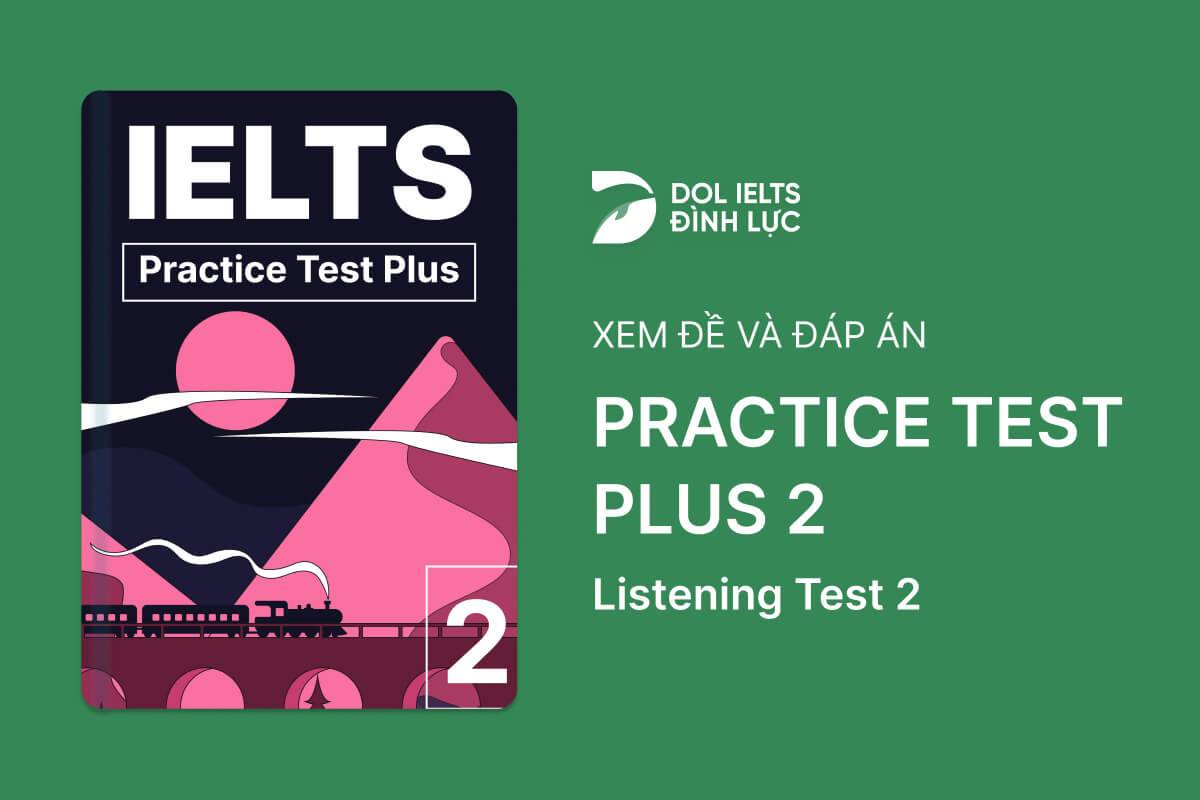Đề thi IELTS Online Test Practice Test Plus 2 - Listening Test 2 - Download PDF Câu hỏi, Transcript và Đáp án
Luyện tập đề IELTS Online Test Practice Test Plus 2 - Listening Test 2 được lấy từ cuốn sách Practice Test Plus 2 với trải nghiệm thi IELTS trên máy và giải thích đáp án chi tiết bằng Linearthinking, kèm answer key và list từ vựng IELTS cần học trong bài đọc.
Section
👂️ Bài nghe section 1
❓ Tapescript section 1
🔥 Đáp án & giải thích section 1
Giải thích chi tiết
Cần nghe về nghề nghiệp của Martin
=> Biết đáp án sắp tới khi nghe " what about employment "
 Cindy có hỏi "are you all students" và Martin nói là "Oh,no"
Cindy có hỏi "are you all students" và Martin nói là "Oh,no"
=> Loại đáp án C 
 Sau đó Martin nói tiếp "we’ve all got full time jobs - two of us work in the Central Bank, that's Chris and me"
Sau đó Martin nói tiếp "we’ve all got full time jobs - two of us work in the Central Bank, that's Chris and me"
Section
👂️ Bài nghe section 2

❓ Tapescript section 2
🔥 Đáp án & giải thích section 2
Giải thích chi tiết
 Đáp án cần tìm là ngày trong tuần mà mọi người có thể visit reading rooms (The reading rooms are only open for group visits on...)
Đáp án cần tìm là ngày trong tuần mà mọi người có thể visit reading rooms (The reading rooms are only open for group visits on...)
=> Biết đáp án sắp tới khi nghe "...do not include a visit to the reading rooms."
 Nghe tiếp được speaker nói "I’m afraid we don’t do visits on Fridays - or any weekday during working hours,"
Nghe tiếp được speaker nói "I’m afraid we don’t do visits on Fridays - or any weekday during working hours,"
=> Không tham quan vào thứ Sáu hay bất kỳ ngày nào trong tuần
 Tiếp tục nghe được "But if you do want to see those rooms, the only day there are tours is on Sundays."
Tiếp tục nghe được "But if you do want to see those rooms, the only day there are tours is on Sundays."
=> Nếu muốn tham quan chỉ có ngày duy nhất là Sundays
=> Đáp án: Sundays 
Section
👂️ Bài nghe section 3
improve the
of ideas26
include a
of 'Work Placement'27
have separate sections for literature survey and research
and methods28
Preparation stage - add summary
development - good29
Constraints on learning - provide better links to the
from research30
❓ Tapescript section 3
🔥 Đáp án & giải thích section 3
Giải thích chi tiết
 Mình cần nghe xem mục đích chính của Dave's project là gì
Mình cần nghe xem mục đích chính của Dave's project là gì
=> Biết đáp án sắp tới khi nghe "So what made you choose that for your project?"
 Đầu tiên Dave nói "Well, I suppose it was because sending students off to various companies for work experience seems to be such a typical part of educational courses..."
Đầu tiên Dave nói "Well, I suppose it was because sending students off to various companies for work experience seems to be such a typical part of educational courses..."
=> Việc gửi student đến các công ty for work experience trở nên typical vì tất cả đều được làm điều đó
 Sau đó Dave nói tiếp :"but I felt everyone just kind of assumes it's a good thing and l guess I wanted to find out if that's the case."
Sau đó Dave nói tiếp :"but I felt everyone just kind of assumes it's a good thing and l guess I wanted to find out if that's the case."
=> Mọi người đều cho rằng nó tốt và Dave muốn tìm hiểu xem có đúng vậy hay không (investigate =find out)
=> Đáp án là B 
Section
👂️ Bài nghe section 4
❓ Tapescript section 4
🔥 Đáp án & giải thích section 4
Giải thích chi tiết
 Mình cần nghe xem billingualism được định nghĩa như thế nào (having an equal level of communicative .... in two or more languages"
Mình cần nghe xem billingualism được định nghĩa như thế nào (having an equal level of communicative .... in two or more languages"
=> Biết đáp án sắp tới khi nghe "Let’s start with a definition of bilingualism" (=defined)
 Nghe tiếp thấy " we can say it's the ability to communicate with the same degree of proficiency in at least two languages"
Nghe tiếp thấy " we can say it's the ability to communicate with the same degree of proficiency in at least two languages"
=> Đó là khả năng giao tiếp với mức độ proficiency tương tự trong ít nhất 2 ngôn ngữ (same degree of= equal level of)
=> Đáp án: proficiency 


